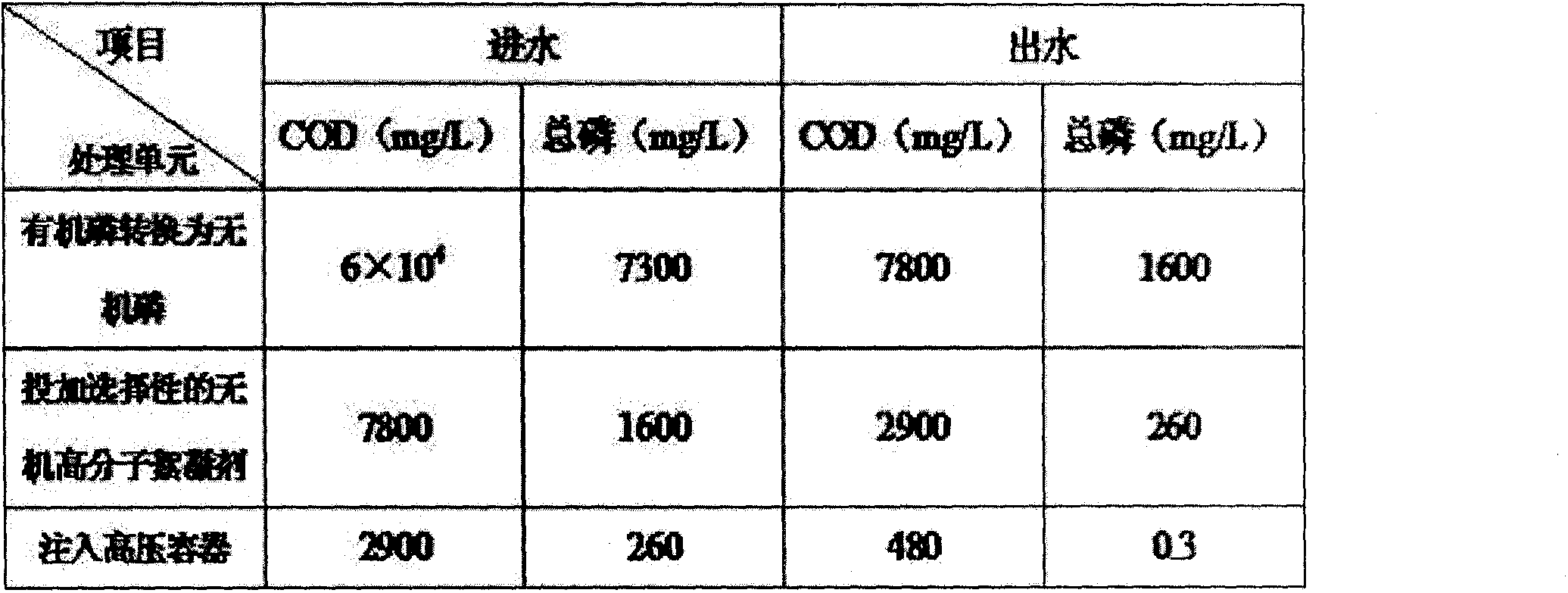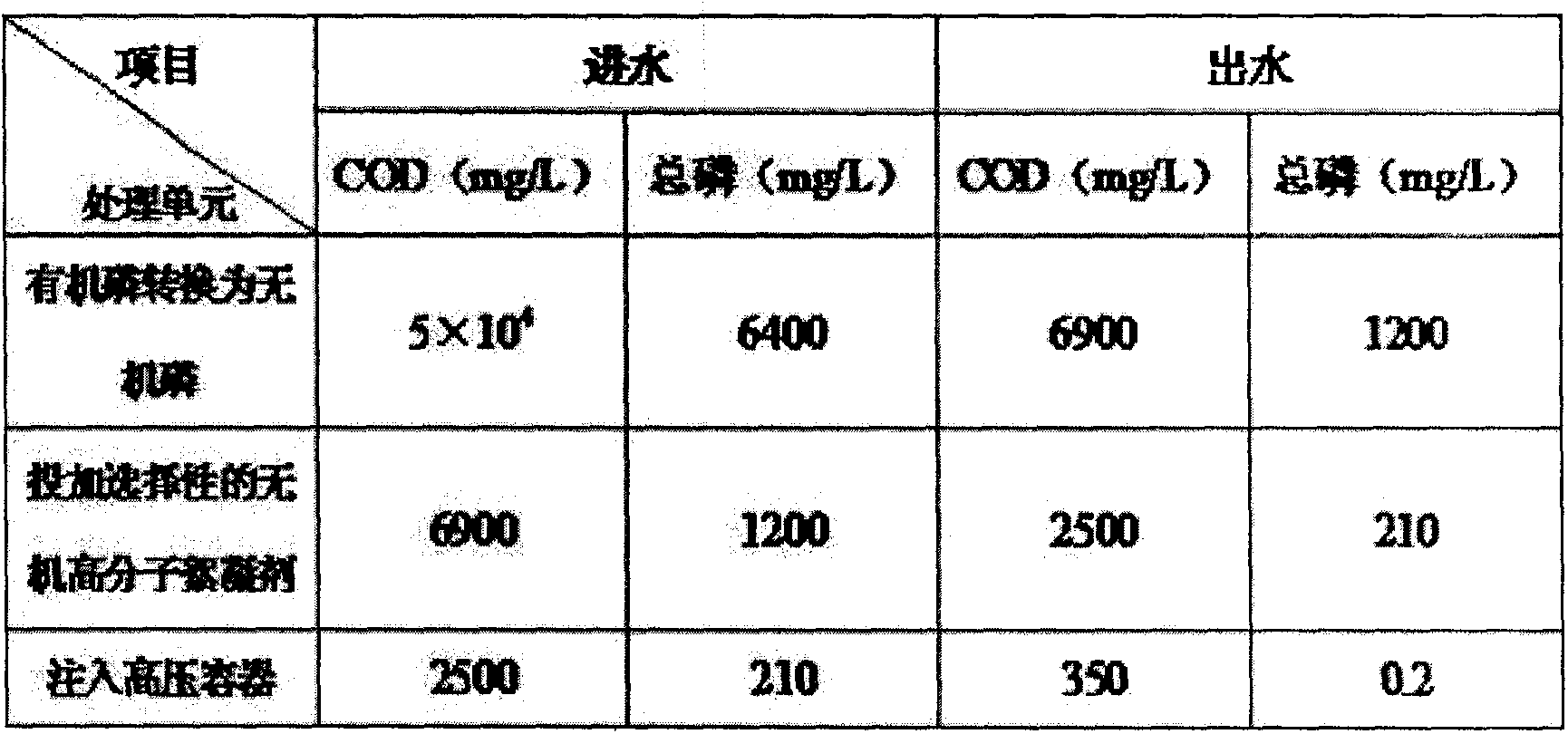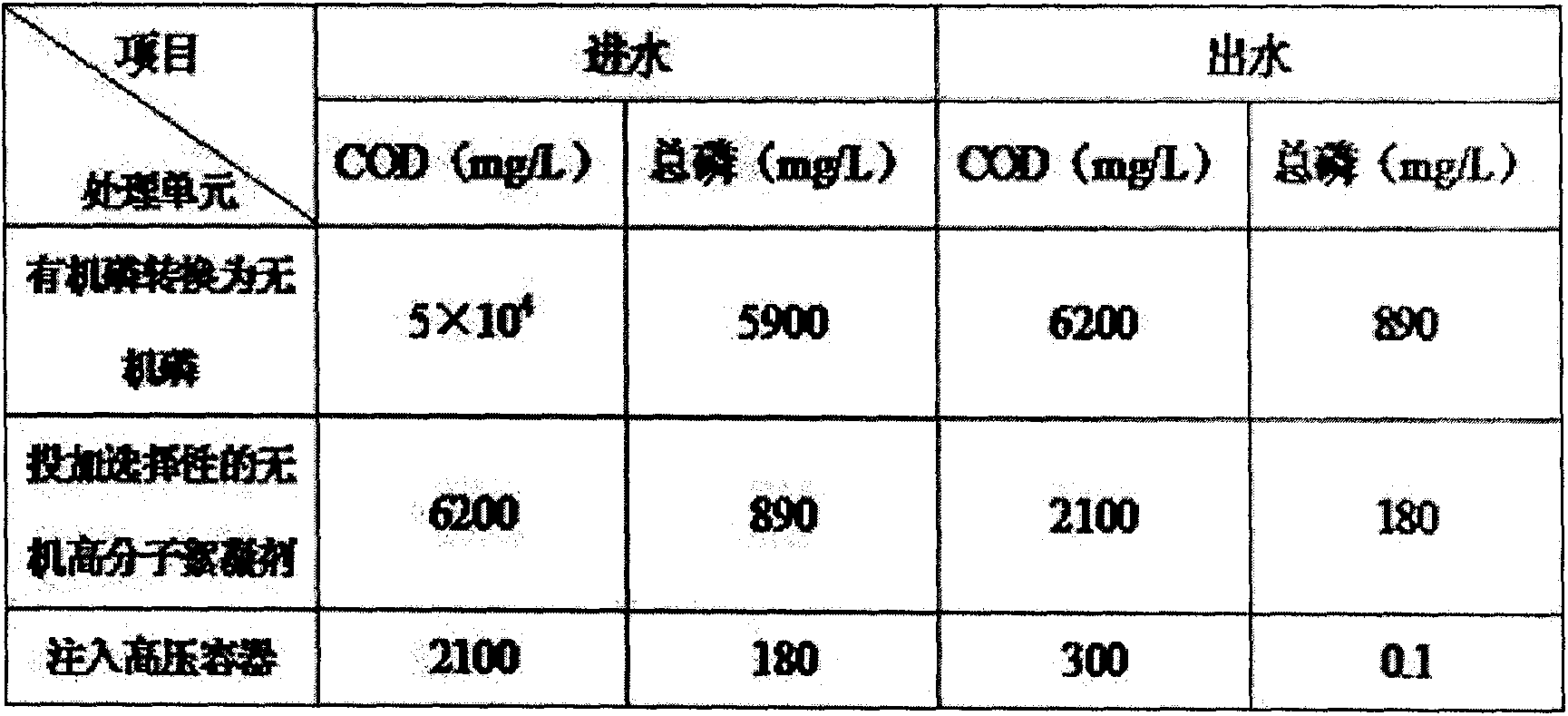Method for removing high concentration phosphorus in glyphosate wastewater
A glyphosate wastewater and high-concentration technology, applied in chemical instruments and methods, water/sewage multi-stage treatment, biological water/sewage treatment, etc., can solve problems such as poor stability, high cost, and low removal effect of high-concentration phosphorus
- Summary
- Abstract
- Description
- Claims
- Application Information
AI Technical Summary
Problems solved by technology
Method used
Image
Examples
Embodiment 1
[0021] First add a certain amount of one of sodium thiosulfate, sodium borohydride, and stannous chloride to the glyphosate wastewater as a reducing agent to maintain the dissolved oxygen in the wastewater at 0.3mg / L; Add extracellular hydrolase and nicotinamide adenine dinucleotide phosphate, keep the temperature of the wastewater at 35°C for 38 hours; then use one of caustic soda and calcium hydroxide as an alkali to adjust the pH value of the wastewater to 7.3; Add 350ppm of polyaluminum iron phosphate and polyaluminum iron phosphate to the wastewater as an inorganic polymer flocculant for flocculation and sedimentation; add 100ppm of sodium hypochlorite and 65ppm of polyepoxy amber to the wastewater after sedimentation Acid, 70ppm glycerol, inject into the high-pressure container, and blow into the air, so that the total pressure in the container is maintained at 5.0MPa; finally, open the high-pressure container channel, release the waste water into the pool, form a white m...
Embodiment 2
[0025] First add a certain amount of one of sodium thiosulfate, sodium borohydride and stannous chloride as a reducing agent to the glyphosate wastewater to maintain the dissolved oxygen in the wastewater at 0.5mg / L; Add extracellular hydrolase and nicotinamide adenine dinucleotide phosphate to the solution, keep the temperature of the wastewater at 37°C for 45 hours; then use one of caustic soda and calcium hydroxide as an alkali to adjust the pH value of the wastewater to 7.8; Add 450ppm of polyaluminum iron phosphate and polyaluminum iron phosphate to the wastewater as an inorganic polymer flocculant for flocculation and sedimentation; add 150ppm of sodium hypochlorite and 95ppm of polyepoxy amber to the wastewater after sedimentation Acid, 75ppm glycerol, injected into the high-pressure container, and blown into the air, so that the total pressure in the container is maintained at 5.9MPa; finally, open the high-pressure container channel, release the waste water into the po...
Embodiment 3
[0029] First add a certain amount of one of sodium thiosulfate, sodium borohydride and stannous chloride as a reducing agent to the glyphosate wastewater to maintain the dissolved oxygen in the wastewater at 0.4mg / L; Add extracellular hydrolase and nicotinamide adenine dinucleotide phosphate to keep the waste water temperature at 36°C for 40°C; then use one of caustic soda and calcium hydroxide as alkali to adjust the pH value of waste water to 7.3; Add 400ppm of polyaluminum ferric phosphate and polyaluminum ferric silicate as an inorganic polymer flocculant for flocculation and sedimentation; add 120ppm of sodium hypochlorite and 70ppm of polyepoxysuccinic acid to the wastewater after sedimentation , 70ppm glycerol is injected into the high-pressure container, and air is blown in to keep the total pressure in the container at 5.8MPa; finally, the channel of the high-pressure container is opened to release the waste water into the pool, forming a white mist-like foam, which is...
PUM
 Login to View More
Login to View More Abstract
Description
Claims
Application Information
 Login to View More
Login to View More - R&D
- Intellectual Property
- Life Sciences
- Materials
- Tech Scout
- Unparalleled Data Quality
- Higher Quality Content
- 60% Fewer Hallucinations
Browse by: Latest US Patents, China's latest patents, Technical Efficacy Thesaurus, Application Domain, Technology Topic, Popular Technical Reports.
© 2025 PatSnap. All rights reserved.Legal|Privacy policy|Modern Slavery Act Transparency Statement|Sitemap|About US| Contact US: help@patsnap.com



